Evergreen trees for gardens – 10 of the best choices
Bring your garden back to life this winter with the best evergreen trees for gardens
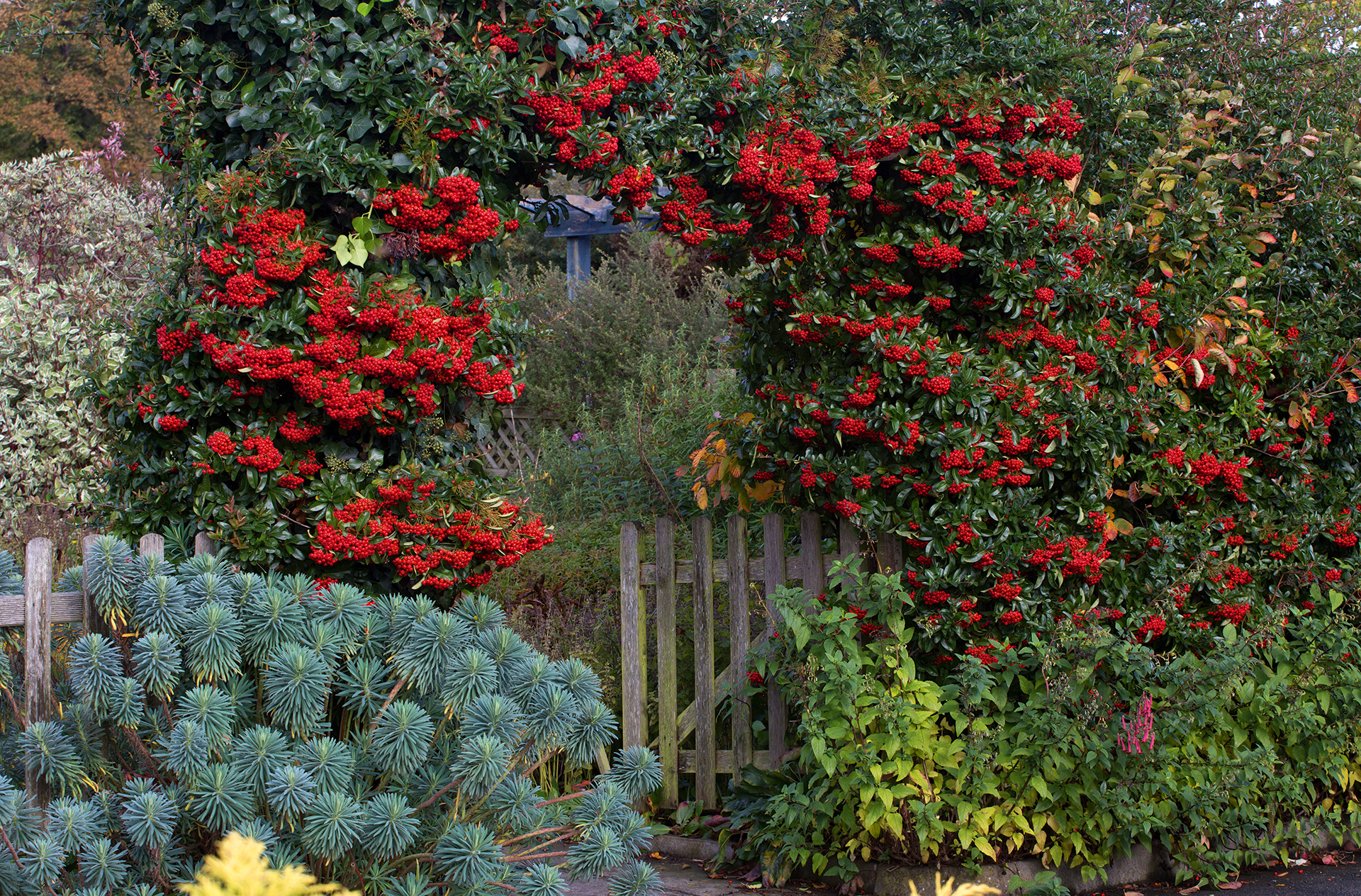

Finding out about the best evergreen trees for gardens and adding a few to your plot will totally transform your outdoor space year-round, and especially during the desolate winter months.
As the red and orange leaves fall off deciduous trees, leaving bare, skeletal bones, it is in winter that we come to truly appreciate the beauty of evergreen trees. Bringing life and color to the now sleeping garden, they are a stalwart that see us through winter and provide the backbone of our backyard ideas.
Evergreen trees for gardens
With their thick green leaves that last all year-round, evergreen trees are some of the best trees for privacy in a backyard. Not only do they hide unsightly views and offer a feeling of seclusion in your garden, but they can also reduce sound pollution, helping to create a sanctuary where you can immerse yourself in nature.
What to consider when choosing evergreen trees for gardens
When selecting the right evergreen tree for your plot, it is vital that you consider the climate in which you live – some trees are evergreen in one climate but deciduous in another.
You also need to think about the tree's size and the amount of shade it will cast. In the winter, light is limited, so you need to be careful not to cast large shadows over your house, as this will make it colder and can even increase your heating bill – in which case, you might want to research the best trees for a small garden – or the best trees for front yards, which will be naturally more compact.
Before you start searching, select the spot for your new tree as this will inform the size and growth rate that you require. Think about where it will cast its shadows and how it will look when fully grown.
It is also key to consider your soil type and the light levels of your spot – picking a tree that is well-suited to both of these conditions will help it to thrive. You might also want to learn how to plant a tree so that you can give your evergreen tree the best start.
Having worked out these parameters, you are then ready to find the best evergreen tree for your garden.
1. Magnolia grandiflora
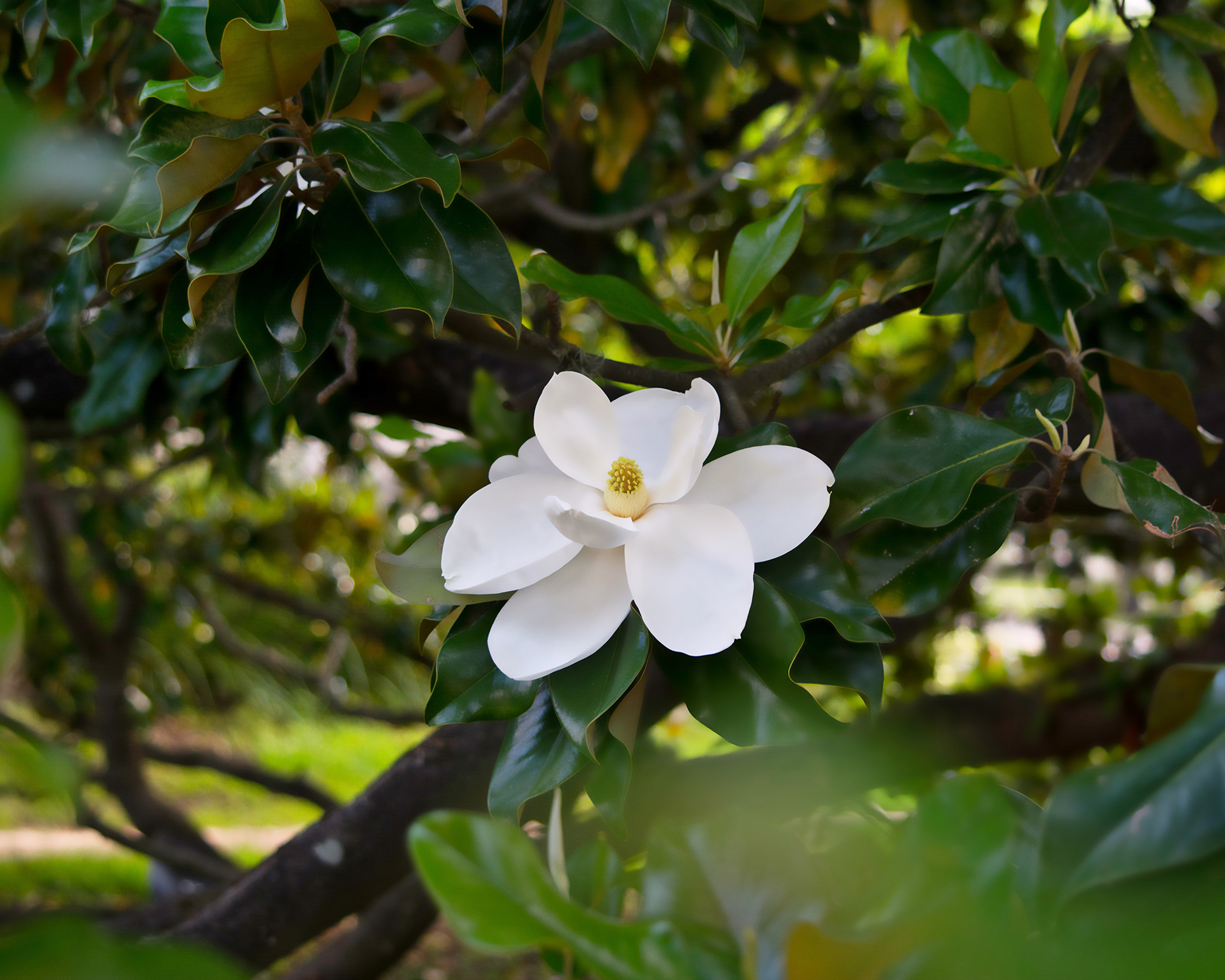
Magnolias are one of the prettiest evergreen plants for gardens. With verdant green leaves and their fragrant citrusy flowers blooming in the spring, magnolia trees make a statement in every season.
However, many magnolia trees are deciduous, so if you're looking for evergreen trees for gardens, be sure to select the Magnolia grandiflora variety. Native to the South Atlantic states, they are a highly adaptable tree and grow in a wide variety of soils, though they thrive best in moist but well-drained, mildly acidic soils.
'Magnolia grandiflora is a large plant with an average height and width of 30-45 feet. The broad leaves are glossy green and held at a 45 degree angle from the stems. In spring, it bears white to pink blooms that add to the appeal of its landscape value,' explains Lindsey Hyland, founder of Urban Organic Yield.
2. Fraser’s Photinia (Photinia x fraseri)
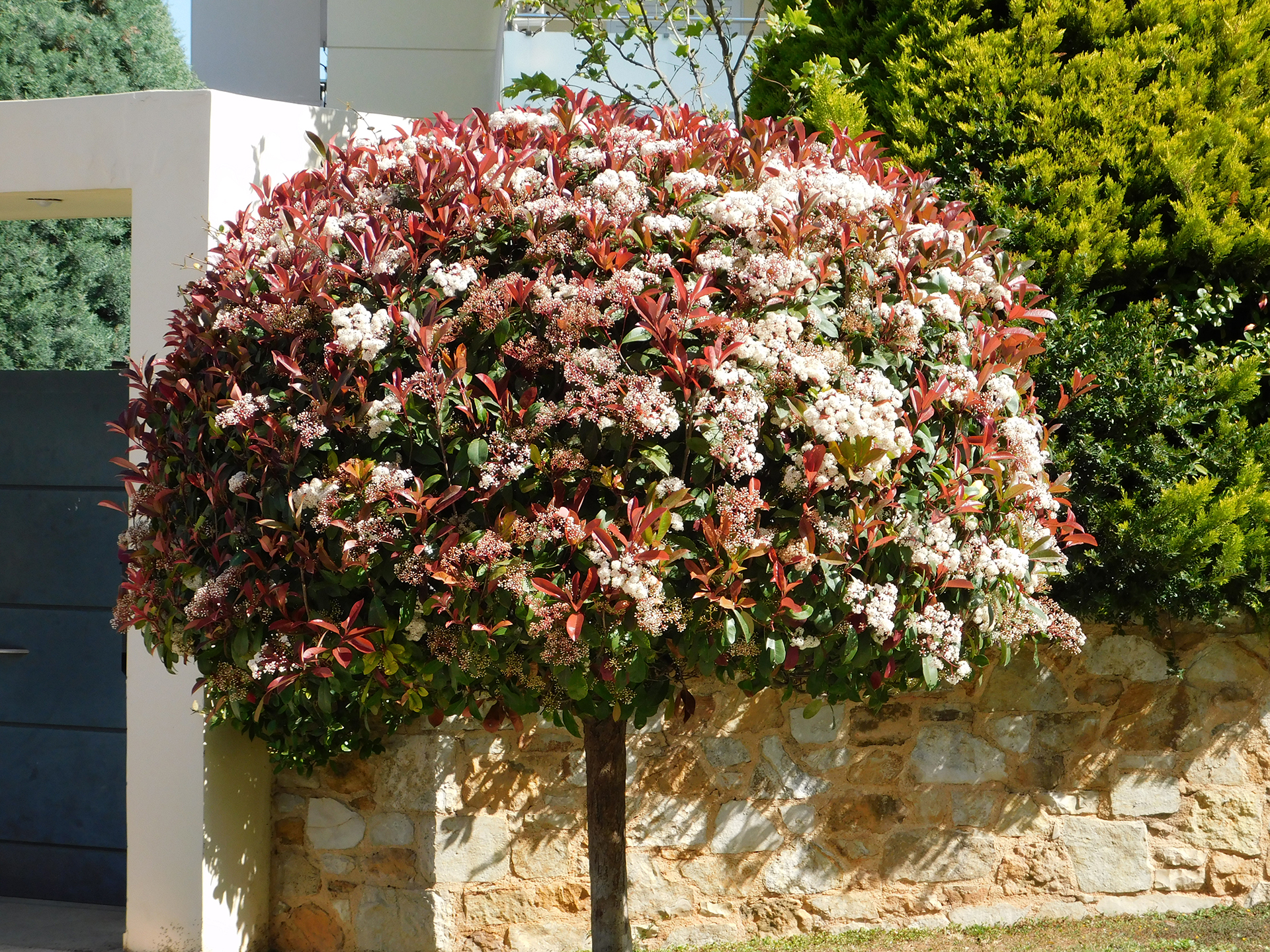
A fast growing tree, Fraser’s Photinia can grow up to 3ft per year making them one of the best trees for privacy and screening in a backyard. Thriving best in full sun and hardy in zones 7 to 9, they offer a profusion of color all year round. Their new foliage emerges bright red, adding a firey hue to the rich green of the older leaves, and then explodes in white blooms come the spring.
Taking around 12 years to grow to full size, they are an extremely versatile addition to the garden, and can be grown as a shrub, hedge or standard tree. They can even be espaliered against a wall for added architectural interest. If you do clip them into a standard shape, as above, it makes them a great choice if you are planning on landscaping around trees in your backyard.
3. Holly trees

There are two main types of evergreen holly that are popular throughout the US. The first are the English hollies, which are the typical festive holly tree, recognizable by its slightly curled spiky leaves. Variegated English holly trees have dark leaves with white edges creating an interesting and unusual addition to the garden. Their thick canopy but smaller size, usually around 25ft, makes them ideal evergreen trees for gardens.
American holly trees are very similar though there are some key differences. These trees are larger, growing to around 60ft, and have a lighter leaf color and subtly different berries.
With both of these holly trees, if you want to produce berries – which are great for feeding birds in winter – then be sure you have 'one male for every one to five females for fruit to form,' advises garden expert and arborist Melinda Myers.
For best results, Melinda advises that you plant in moist acidic soil and select a variety that is suited to your growing conditions, 'for easy care and best results, shelter from drying winter winds.'
4. Juniper
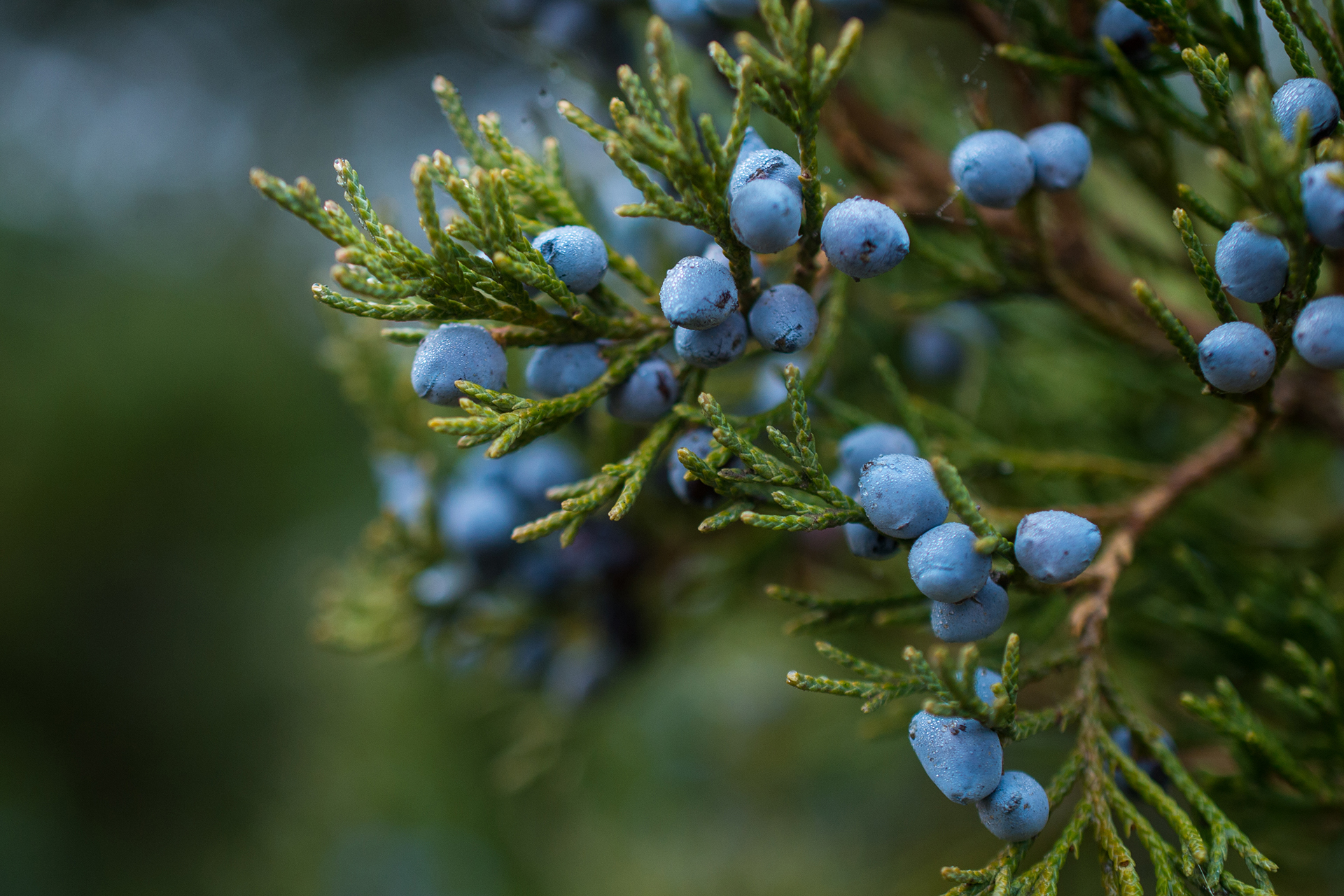
Best known as the key ingredient in gin, juniper trees are actually a worthwhile addition to the garden in their own right. A type of conifer, they are praised for their versatility and hardy in zones 3 through to 9.
'Junipers come in various colors and can grow in soils that are difficult to grow other plants. With all of the different varieties available, you’ll easily be able to find one that fits in with your garden. Most junipers do best in full sun, though a few like the shade in the late afternoon,' recommends Emilly Barbosa Fernandes, small space gardener at House Grail.
Junipers also suit a variety of different styles, the tree can be pruned into a neat triangular shape, or can be left to grow more naturally for a more rustic appearance.
5. Hemlock (Tsuga)
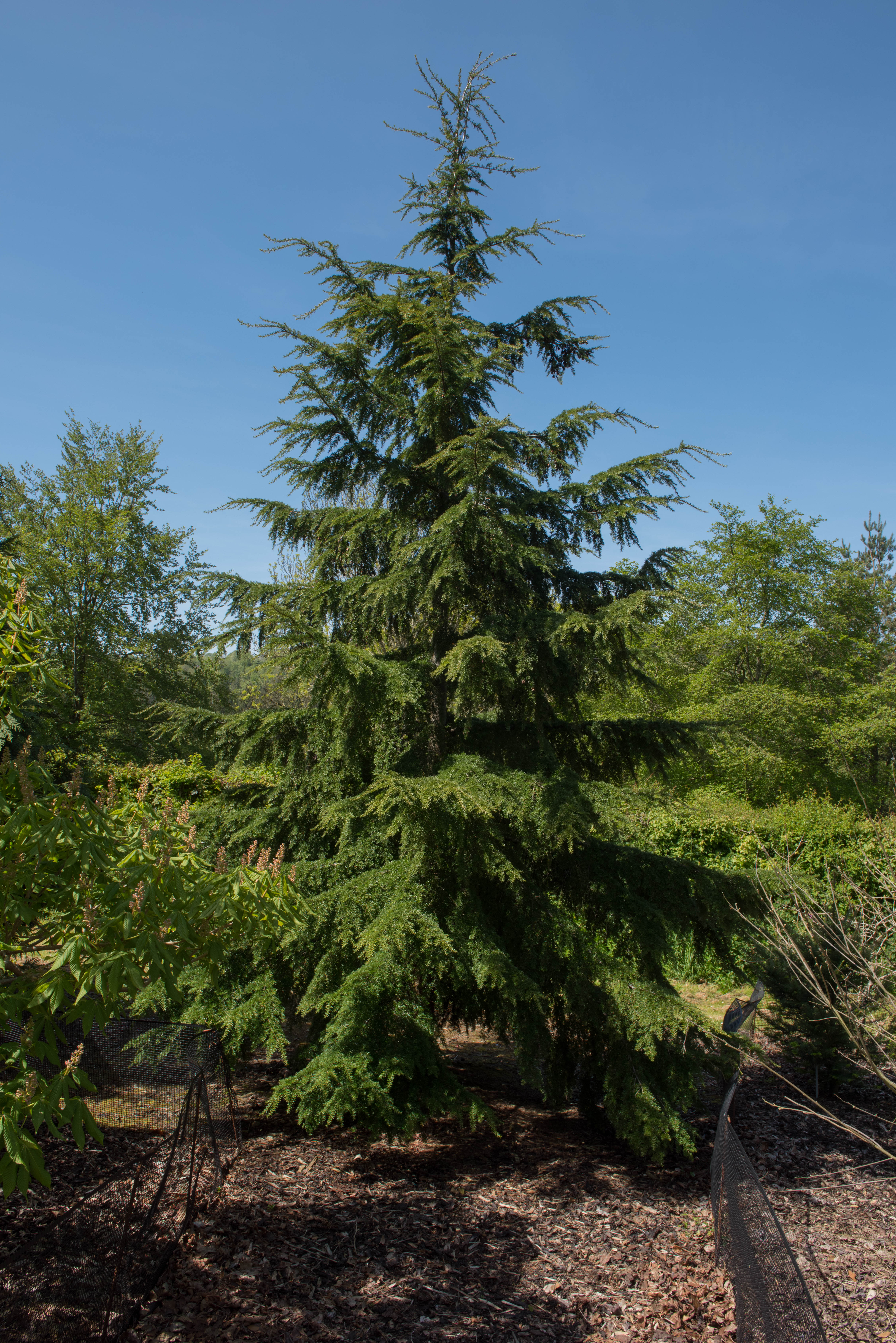
Hemlock is a type of evergreen fir tree praised for its versatility. There is a variety to suit almost all conditions throughout the US, from the Canadian Hemlock which thrives from zones 3 to 8; to the Western Hemlock which grows in zones 6 to 8 and will even grow in the densest shade. Plus, there are the Eastern and Caroline hemlocks which are also great evergreen trees for gardens.
Loved for their pyramidal shape, dark, evergreen needles and decorative cones, they are a popular evergreen tree for backyards.
'More shade tolerant than most evergreens, they need protection from drying winter winds and sun. Therefore it is important to plant in an appropriate location with adequate moisture, good drainage and cool acidic soil,' advises gardening expert and arborist Melinda Myers.
6. Scarlet Firethorn (Pyracantha coccinea)

Characterized by deep red berries, thorny stems and dense foliage, Pyracantha coccineas offer a host of benefits to the garden. Their berries are loved by birds, and the vivid red of them makes them one of the best trees for autumn color. The thorny foliage offers a safe space for our feathered friends to nest during the spring and summer, too.
Growing up to 10 feet tall and offering a host of sharp stems and thick foliage, Pyracantha coccineas can be grown to increase the security and privacy of your home and garden. What's more, Pyracantha coccinea is one of the most durable evergreen trees for gardens making it perfect for those who are less confident in gardening. They grow well in both full and partial sun and can thrive in almost all soil types including chalk, clay, loam and sand.
7. Shore Pine (Pinus contorta 'Chief Joseph')
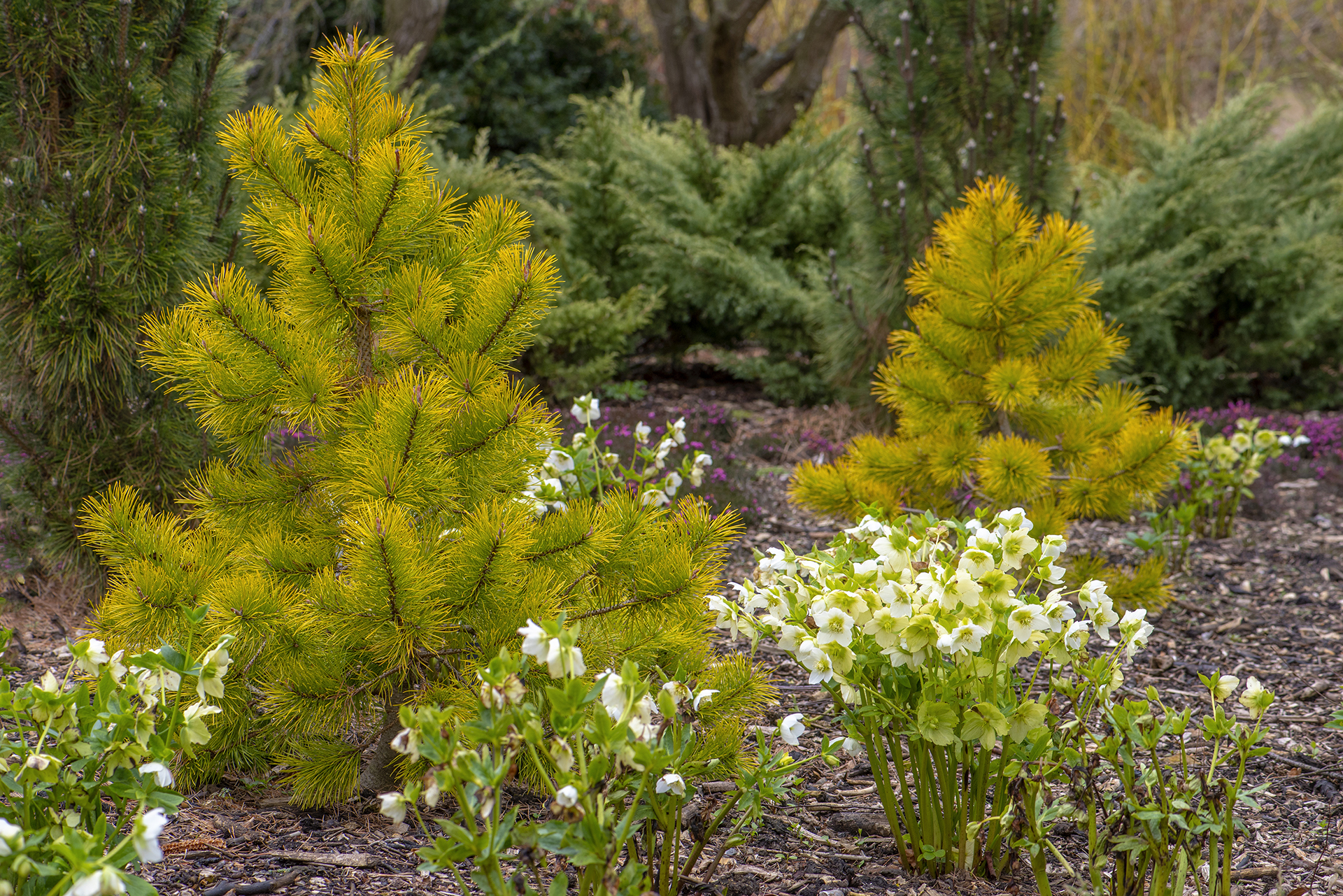
Pines are one of the most popular evergreen trees for gardens, however, Shore Pines offer something a little different. Unlike their larger relatives, Shore Pines are fairly petite with a slow growth rate. This makes them great evergreen trees for gardens that are on the smaller side – they can even be grown in a pot.
However, what makes these evergreen trees really special is their color. Throughout summer and fall, the leaves are not particularly noteworthy, though they do offer a rich green backdrop for other plantings, but come the winter and spring, they are transformed into a captivating golden hue that brightens even the darkest plot. Consider pairing with hellebores for a beautiful winter border.
8. Strawberry tree (Arbutus unedo)
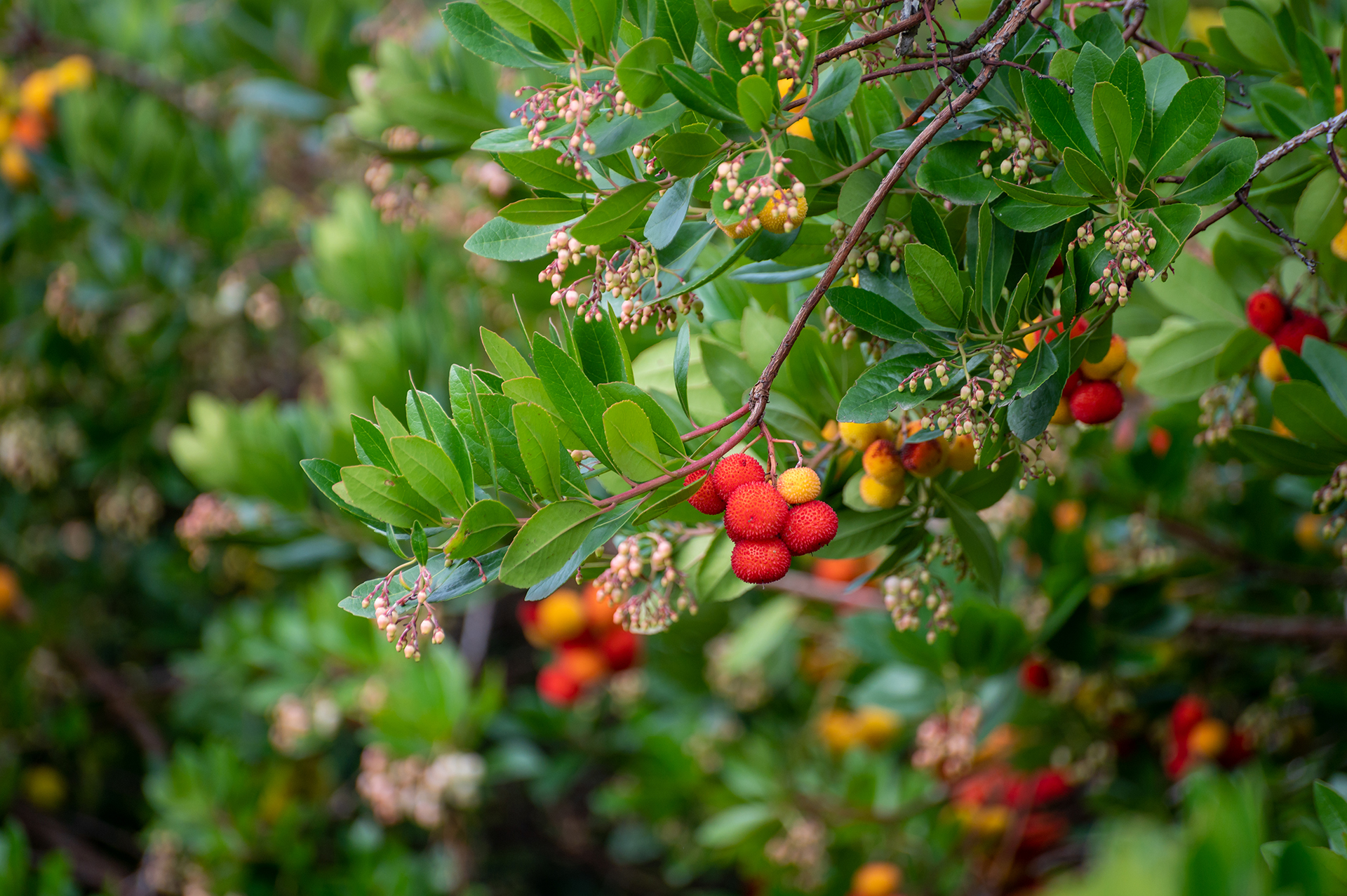
A rather understated choice, strawberry trees are amongst the best evergreen trees for gardens due to their unusual character. With peeling bark, evergreen foliage, and small white flowers blooming from October to December, they brighten up the darkest fall and winter days. The strawberry tree's slow growth rate also makes it one of the best trees to grow in small gardens.
Following flowering, they produce bright red fruit – the same color as strawberries – though different in shape and flavor.
'The scarlet red fruits only fully ripen in the following year, as a new set of flowers emerge,' explains Sue Sanderson, horticultural executive at Thompson & Morgan. While the berries can be eaten off the tree, they are best preserved in jams, liqueurs and syrups.
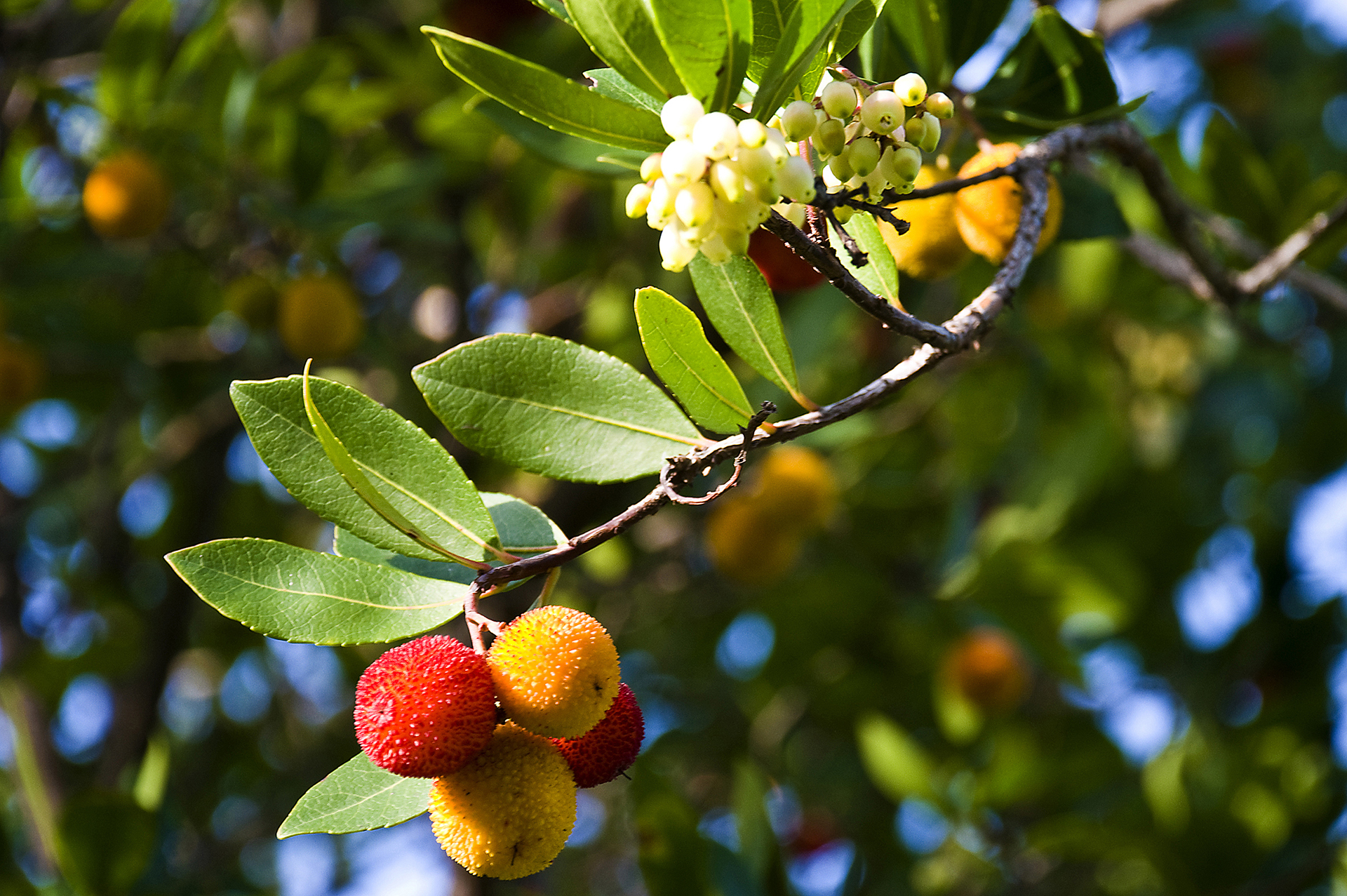
9. Giant arborvitae (Thuja plicata)
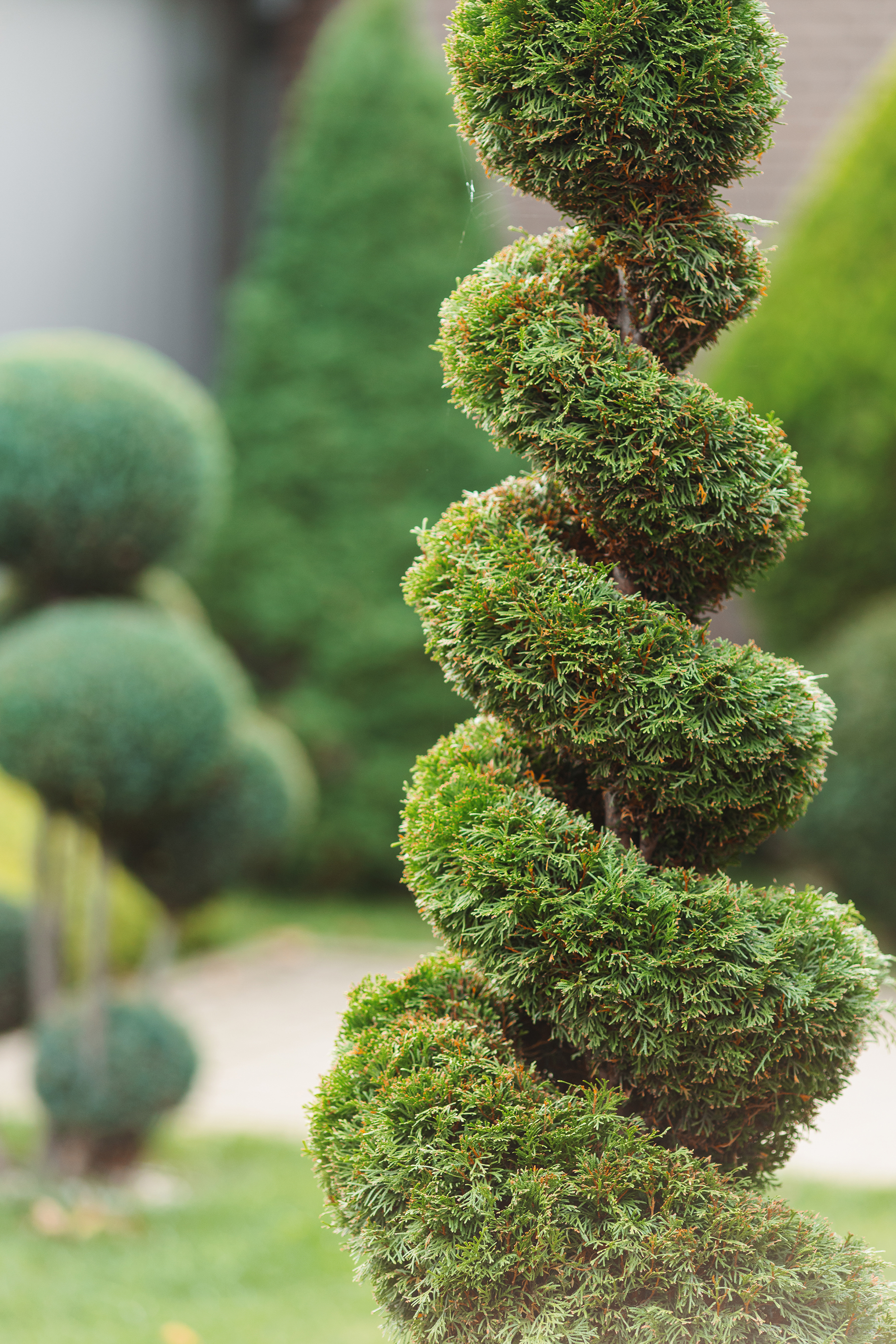
Giant arborvitae also known as Thuja plicata is one of the easiest evergreen trees to introduce to your backyard. Native to western North America, the giant arborvitae is relatively hardy, 'it grows well in zones 5-9 and does exceptionally in zones 6 to 8,' says Tammy Sons garden expert and CEO at Online Plant Nursery.
When it comes to finding a spot for your Giant arborvitae, it is vital to consider the plants needs. 'It prefers full sun though will tolerate light shade and fertile, moist well-drained soil. However, it is somewhat tolerant of heat of dry conditions once established,' advises Melinda Myers.
As a quick growing tree you will either need to factor in a large amount of growing space or you can use it for topiary. Giant arborvitae are one of the best evergreen trees for topiary and will create a beautiful focal point in your garden. Simply prune to shape in the spring, and then prune to maintain come the fall.
10. Olive tree

With their Mediterranean heritage, you would assume that humble olive trees are deciduous. However, they are one of the best evergreen trees for gardens for zones 8 to 10. Though they are hardy down to around 10°F, though anything below 45°F will inhibit their fruit production. As a result, they are one of the best trees to grow in pots, as you can move them into a greenhouse for the coldest winter spells.
When purchasing an olive tree, Guy Barter, chief horticulturist at the RHS, stresses the importance of buying from a reputable supplier that gets stock from areas free of the notifiable disease, Xylella; 'so long as you purchase from a reputable supplier, olives are generally free of pests and diseases'.
Despite being evergreen trees, Guy explains that you shouldn't be surprised if many leaves fall in April, 'this is natural turnover of older leaves to make way for new ones'.
For more unusual fruit trees, which are native the US try pawpaw.
What is the most beautiful evergreen tree?
Magnolia grandiflora is the most beautiful evergreen tree. Erupting in a profusion of blooms in the spring adding beauty and scent, these trees are at their best at the start of spring, heralding the warmer days ahead. However, for the rest of the year, they are elegant additions to gardens as their broad, glossy leaves offer year-round interest and brings continual life, even in the dead of winter.
What is the best evergreen tree for a small garden?
Holly is the best evergreen tree for a small garden as it offers vibrant leaf color, visual interest and a great source of food for visiting wildlife, all the while maintaining a small stature.
While there are some larger varieties, there are also plenty of smaller options, like the Chinese dwarf holly, that are slow-growing. If your garden is particularly small, consider growing evergreen trees in pots as this will help you to keep control of their size.
Sign up to the Homes & Gardens newsletter
Design expertise in your inbox – from inspiring decorating ideas and beautiful celebrity homes to practical gardening advice and shopping round-ups.

Having graduated with a first class degree in English Literature, Holly started her career as a features writer and sub-editor at Period Living magazine, Homes & Gardens' sister title. Working on Period Living brought with it insight into the complexities of owning and caring for period homes, from interior decorating through to choosing the right windows and the challenges of extending. This has led to a passion for traditional interiors, particularly the country-look. Writing for the Homes & Gardens website as a content editor, alongside regular features for Period Living and Country Homes & Interiors magazines, has enabled her to broaden her writing to incorporate her interests in gardening, wildlife and nature.
-
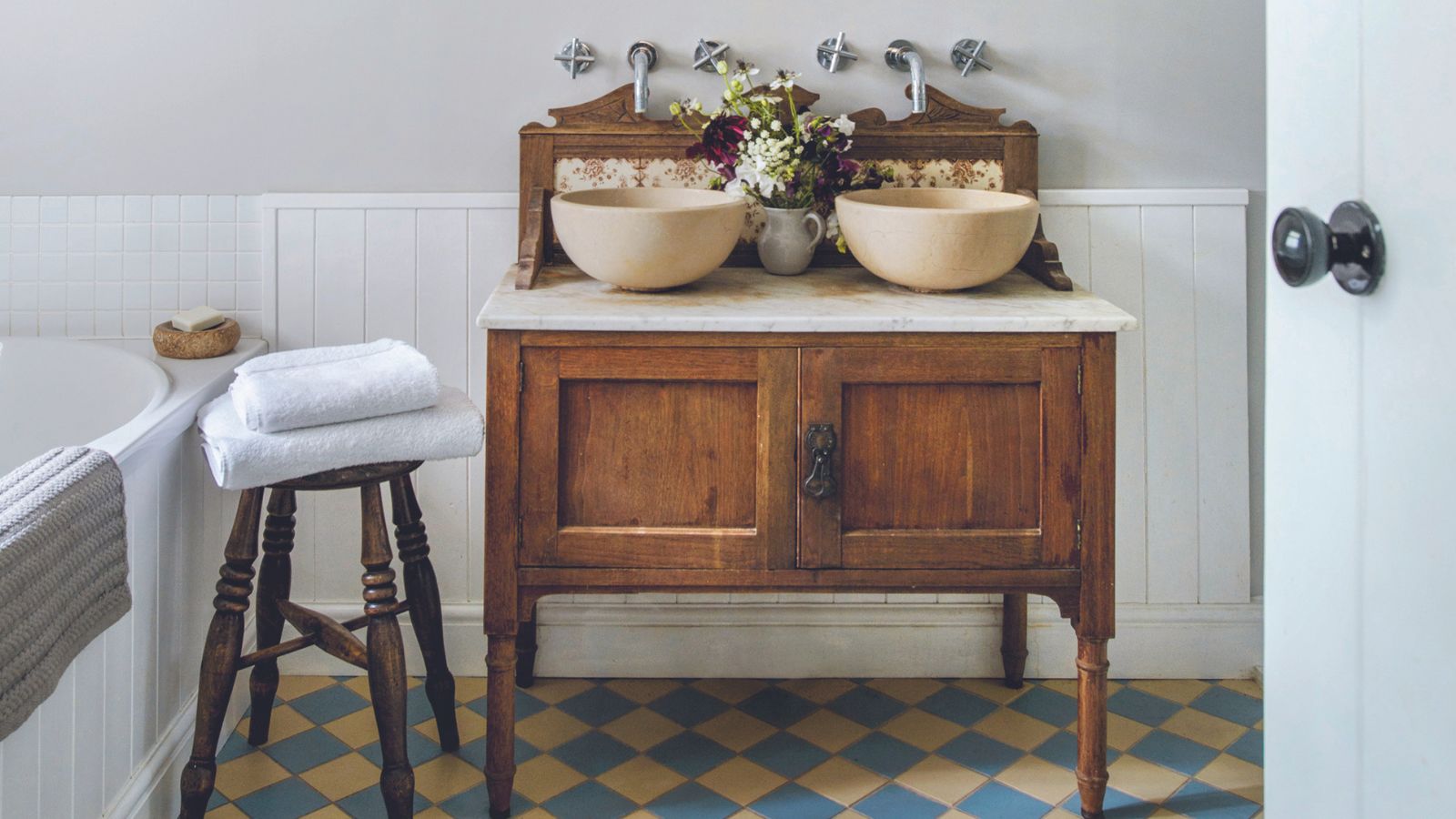 I'm 5ft2 and this telescopic scrubber safely and easily banished mold and grime in even the hardest-to-reach areas of my bathroom in less than 15 minutes
I'm 5ft2 and this telescopic scrubber safely and easily banished mold and grime in even the hardest-to-reach areas of my bathroom in less than 15 minutesMy bathroom has never looked better thanks to this handy $16 two-in-one tool from Joseph Joseph
By Ottilie Blackhall Published
-
 Everyone is obsessed with vintage tiles right now – bring the nostalgic charm of this classic design feature into your home with our 5 design ideas
Everyone is obsessed with vintage tiles right now – bring the nostalgic charm of this classic design feature into your home with our 5 design ideasHonor the past with our favorite ways to decorate with vintage tiles, as suggested by interior design experts
By Eleanor Richardson Published
-
 Water garden ideas – 9 ways to introduce soothing water to your outdoor space
Water garden ideas – 9 ways to introduce soothing water to your outdoor spaceFrom cascading fountains to wildlife ponds, there are plenty of ways to create a tranquil water garden
By Leigh Clapp Published
-
 How to grow poppies
How to grow poppiesFind out how to grow poppies to enjoy the beauty of these brightly colored tissue paper-like blooms
By Leigh Clapp Published
-
 How to grow delphiniums from seed
How to grow delphiniums from seedFind out how to grow delphiniums from seed and enjoy these colorful cottage garden favorites filling beds and borders
By Leigh Clapp Published
-
 How to grow ferns – when and how to plant and care for them
How to grow ferns – when and how to plant and care for themLearn how to grow ferns to enjoy the texture and form of these versatile plants in many areas of your garden
By Leigh Clapp Published
-
 How to grow sweet peas from seed – in borders and pots
How to grow sweet peas from seed – in borders and potsFind out how to grow sweet peas and where to enjoy their wonderful color, ruffled blooms and sweet fragrance in your garden
By Pippa Blenkinsop Published
-
 How to make fat balls for birds – easy steps feed our feathered friends
How to make fat balls for birds – easy steps feed our feathered friendsLearn how to make fat balls for birds to ensure their wellbeing throughout the winter
By Holly Reaney Published
-
 Planning a kitchen garden – from layouts to picking the best crops
Planning a kitchen garden – from layouts to picking the best cropsPlanning a kitchen garden is easy with this expert advice – whether yours is in beds, borders or a dedicated patch – you're guaranteed success
By Leigh Clapp Published
-
 How to grow cosmos – expert tips on when and where to plant these flowers
How to grow cosmos – expert tips on when and where to plant these flowersLearn how to grow cosmos to add bright color in your garden from summer through to fall with their beautiful blooms
By Leigh Clapp Published